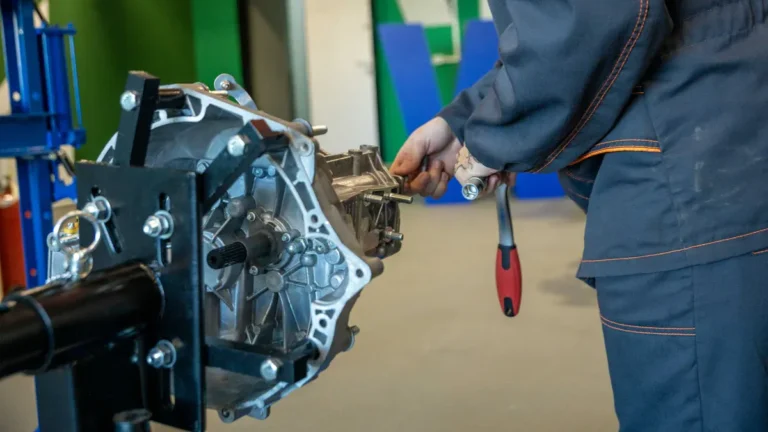Jeep Cherokee has indeed offered two-wheel-drive (2WD) versions since mid-1985, starting with the XJ model. These 2WD variants share much of the suspension and steering setup with their four-wheel-drive siblings but drop the front differential, making them lighter, simpler, and more cost-effective. They appeal particularly to urban drivers and fleet users who value better fuel economy and lower maintenance while still enjoying Jeep’s styling and comfort. This mix of practicality and classic Jeep character gives buyers options beyond the rugged 4WD experience, setting the stage for more modern choices.
History and Development of Jeep Cherokee 2WD Models
In mid-1985, Jeep introduced the two-wheel-drive (2WD) option for the Cherokee, marking a significant milestone as it was the initial occasion a Jeep model offered 2WD since 1967. This production milestone reflected a shift in design philosophy, catering to buyers who preferred a simpler, lighter vehicle without four-wheel drive complexity.
The 2WD Cherokee shared front suspension components with 4WD models but featured a single axle tube without a differential, reducing cost and weight while maintaining handling integrity. The introduction expanded Jeep’s market appeal beyond traditional off-road enthusiasts to urban and suburban customers seeking efficiency and lower ownership costs.
This strategic adaptation laid the foundation for 2WD variants throughout subsequent Cherokee generations, proving that flexibility in drivetrain configuration could sustain strong sales and brand relevance for decades.
Technical Features of Jeep Cherokee 2WD
The Jeep Cherokee 2WD models feature a distinct yet practical technical design that balances simplicity with shared components from their 4WD counterparts. Instead of a complex front differential, these models use a solid front axle tube that runs straight from hub to hub, eliminating the extra weight and cost of 4WD hardware yet still keeping the same steering geometry and suspension parts like the track bar, control arms, and ball joints.
This shared foundation means handling feels familiar, even though the axle construction is simpler and lighter, which also helps save fuel and lower maintenance. Buyers get straightforward reliability without giving up Jeep’s tough look or spacious interior.
The design keeps features seamless for daily driving, so you still enjoy comfort, safety upgrades, and smooth ride quality, just with fewer moving parts to worry about.
Market Impact and Popularity of 2WD Versions
Frequently overlooked in discussions about Jeep’s rugged lineup, the 2WD versions of the Cherokee have carved out a solid niche through appealing to drivers who value simplicity, efficiency, and everyday practicality.
Their urban appeal made them especially attractive to city dwellers and suburban buyers who preferred a lighter, less complex vehicle without sacrificing style or comfort. This broadened the Cherokee’s customer base beyond traditional off-road enthusiasts.
Additionally, fleet adoption of 2WD Cherokees highlighted their reliability and cost-effectiveness for businesses needing dependable transport with lower maintenance demands.
The 2WD models sustained steady popularity across multiple generations, demonstrating that Jeep successfully balanced rugged capability with accessible, practical design. This approach reinforced the Cherokee’s position as a versatile SUV in a competitive market.
Trim Levels and Engine Options for 2WD Cherokees
Wide availability of 2WD across multiple Jeep Cherokee trims allowed the model to meet diverse needs without compromising much on features or power. The 2WD option was offered on trims such as the base, Sport, Laredo, and select years of the Limited, ensuring buyers could choose from various feature packages without losing availability of two-wheel drive.
Engine options paired with 2WD included both four-cylinder and six-cylinder variants, catering to those who prioritized fuel efficiency or muscle. For example, earlier XJ models offered the dependable 4.0-liter inline-six alongside smaller engines, while modern KL Cherokees provided turbocharged four-cylinders and naturally aspirated engines.
This combination of trim comparisons and engine options allowed Jeep to satisfy urban drivers and enthusiasts alike, blending traditional power with accessible drivetrains.
Modern Jeep Cherokee 2WD: Features and Availability
Although often overshadowed amid its off-road-ready four-wheel-drive siblings, the modern Jeep Cherokee 2WD models bring appealing advantages that connect with many drivers. These models offer regional availability that caters to urban and suburban buyers who prioritize fuel efficiency and lower ownership costs.
Dealership inventory often includes 2WD Cherokees, particularly in markets where four-wheel drive is less essential, improving accessibility for potential owners.
The 2WD versions incorporate modern safety features such as side-curtain airbags and advanced engine options, including turbocharged and naturally aspirated variants. These configurations allow a customized balance between performance and economy.
The 2WD setup simplifies the drivetrain, reducing maintenance complexity without sacrificing interior and exterior amenities found in 4WD trims. Consequently, the modern 2WD Cherokee sustains consumer demand while expanding Jeep’s reach beyond traditional off-road enthusiasts.



